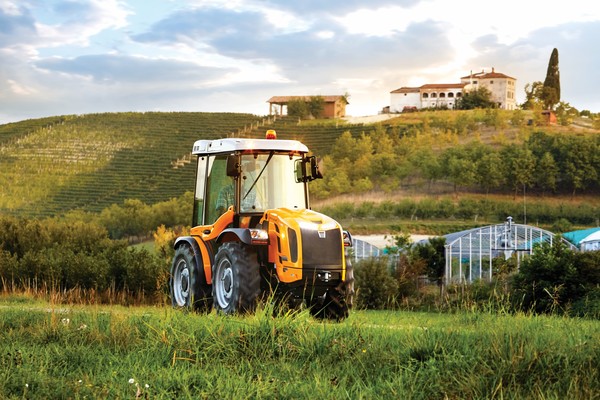
Istat Census, a snapshot of Italian agriculture
The Italian Office for National Statistics has released the initial data from the agricultural census of the country, which shows a decrease in the number of active farms which are, however, larger. The total number of farmers is decreasing, with many farm managers still over 75 years of age and greater recourse to non-family labour. The focus on innovation is growing, especially in the agro-mechanical field
The first results of the 7th general census of Italian agriculture conducted by Istat were released in June. Due to Covid, the survey was conducted from 7 January to 30 July 2021, but with reference to the 2019-2020 agricultural year. Like its predecessors, the survey had the objective of "taking a snapshot" of the trends in the Italian agricultural sector, which "although a traditional activity, is increasingly tending towards innovation and the expansion of its scope."
There were 1,133 mln active farms in Italy in October 2020 with a UAA (utilised agricultural area) of 12.5 thousand hectares and a SAT (total agricultural area) of 16.5 thousand hectares. The number of farms is down by 52.7% and 30% respectively compared to the 2000 and 2010 censuses. Decreases in the order of 21.5% in the northwest, 25.6% in the northeast, 28.9% in the centre, 33% in the south and 32.4% on the islands. Campania recorded the highest figure with a decrease of 42% and the Autonomous Region of Bolzano the lowest, 1.1%.
The UAA decreased nationally by 4.9% and the SAT by 2.5%. The average farm land used is growing, rising from 7.9 hectares in the last survey and 5.5 in the previous one to 11.1 in the current one. In 2020, just over 2 out of 10 farms have less than one hectare of UAA, while it was 3 out of 10 in 2010 and 4 out of 10 in 2000. Farms with at least 10 hectares of UAA and less than 100 between 2000 and 2020 doubled from 8.9% to 20%; the number of those with at least 100 hectares of UAA remained unchanged (from 1.5% to 1.6%).
As regards the legal profile of the activities surveyed, 93.5% of them are sole proprietorships or family businesses (down 2.6% on 2010). On the other hand, those operated by partnerships and joint stock companies grew from 2.9% to 4.8% and from 0.5% to 1%. Company size on a legal basis sees the first stand at 8.6 ha UAA, the second at 41.6 ha and the third at 41.5 ha.
The number of farms cultivating exclusively owned land then fell from 1.18 million to 664 thousand in 2010. On the other hand, the property-plus-rental formula is on the rise, rising from 9.8% to 12.5% of the farms surveyed over the same period.
The total number of employees in the sector is 2.8 mln (1.9 mln men and 0.8 mln women), down 28.8% on 2010. The heads of farms number 1.14 million (68.5% men and 31.5% women), with 13.4% aged up to 44, 29% aged 45 to 59, 36.2% aged 60 to 74, and 23.1% over 75. Their education level is 59% without a qualification or with a year 9 education (it was over 70% in 2010) and 10% with a university degree: one in three has participated in at least one training course in the sector. The family labour force stands at 1 mln (-50.3%) and the non-family labour force at 1.3 mln (+38.1%). One in three workers is a foreigner.
On the crops front, 64.4% of the holdings are dedicated to arable crops, accounting for 57.4 hectares of UAA; 71.4% (17.4 of UAA) to agricultural woody crops, mainly olives and vines; 25.4% (25.0 of UAA) to meadows and pastures; and 14.4% (0.1 of UAA) to family gardens.
The livestock sector counts 214 thousand farms (data as at 1 December 2020, down 4.3% on 2010), of which 44.4% are dedicated to cattle; 26.7% to poultry; 26.4% to sheep; 17.8% to pigs, and 14.4% to goats, for a total of more than 49 million heads.
In the three-year period 2018/2020, about 125,000 farms made at least one innovative investment, totaling over 248,000 'interventions', 28% of which were in the mechanisation sector.
Digitisation concerns 15.8% of farms, which stood at 3.8% in 2010. This percentage rises to 61.7% in farms that carry out remunerative activities related to agriculture. The latter have grown by 5.7% and involve more than 126 thousand farms, 37.8% of which are in the agrotourism and accommodation sector and 16.8% in the production of renewable energy (a figure that is up by 198%). Contracting is practised by 18% of the companies surveyed, but is down 49% from the previous survey. This census, the seventh since 1961, will be the last one every ten years: it will be replaced by permanent and sample censuses.








